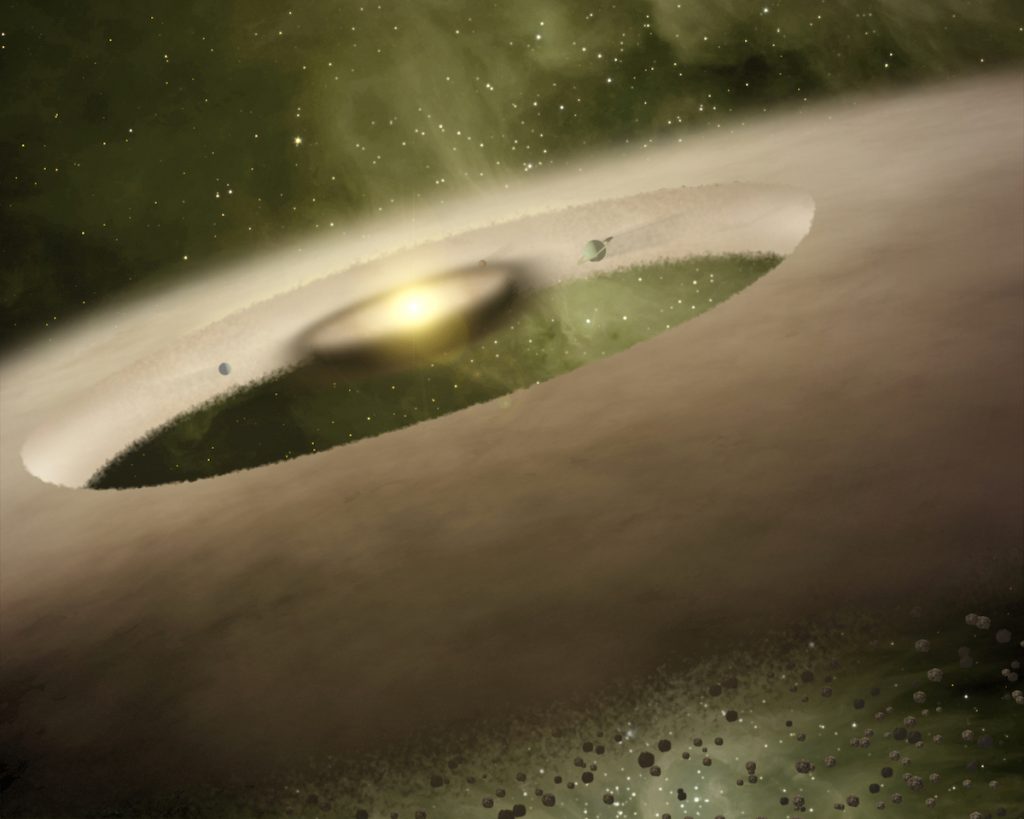The Institute of Astrophysics of Andalusia (IAA-CSIC) leads the study of the binary star SVS 13, still in its embryonic phase. Astronomers have observed primordial material that may be giving birth to three planetary systems around a binary star.
Astronomers have observed primordial material that may be giving birth to three planetary systems around a binary star in unprecedented detail.
Bringing together three decades of study, an international group of scientists have observed a pair of stars orbiting each other, to reveal that these stars are surrounded by disks of gas and dust. Research published today in The Astrophysical Journal, shows the material within the newly discovered disks could be the beginnings of new planet systems which in the future orbit the binary stars.
The Institute of Astrophysics of Andalusia (IAA-CSIC) leads a study based on data from Calar Alto Observatory (CAHA), showing the variability of the planetary nebula IC4997.
How Newborn Stars Prepare for the Birth of Planets
An international team of astronomers used two of the most powerful radio telescopes in the world to create more than three hundred images deal new details about the birthplaces of planets and the earliest stages of star formation.

Star’s Birth May Have Triggered Another Star Birth
Astronomers using the National Science Foundation’s Karl G. Jansky Very Large Array (VLA) have found new evidence suggesting that a jet of fast-moving material ejected from one young star may have triggered the formation of another, younger protostar.

ALMA Discovers Cold Dust Around Nearest Star
The ALMA Observatory in Chile has detected dust around the closest star to the Solar System, Proxima Centauri. These new observations reveal the glow coming from cold dust in a region between one to four times as far from Proxima Centauri as the Earth is from the Sun. The data also hint at the presence of an even cooler outer dust belt and may indicate the presence of an elaborate planetary system. These structures are similar to the much larger belts in the Solar System and are also expected to be made from particles of rock and ice that failed to form planets.

Birth of a Compact Multi-Planet System
Osorio et al. (2016) present the discovery of a miniature protoplanetary disk around the star XZ Tau B. This discovery was made from observations using the Atacama Large Millimeter/Submillimeter Array (ALMA). XZ Tau B is a young red dwarf star estimated to be only ~4.6 million years old. It is located ~450 light years away, and it has ~1.2 times the radius and ~0.37 times the mass of the Sun. The large radius of the star indicates that it is still in the process of contracting to its final radius. The estimated effective temperature of XZ Tau B is 3550 K.

The gaseous, dusty disks surrounding newly born stars can reveal a wealth of information about how distant stellar systems form and evolve. In a new study, scientists have now watched the interaction of two such disks in a stellar flyby.









